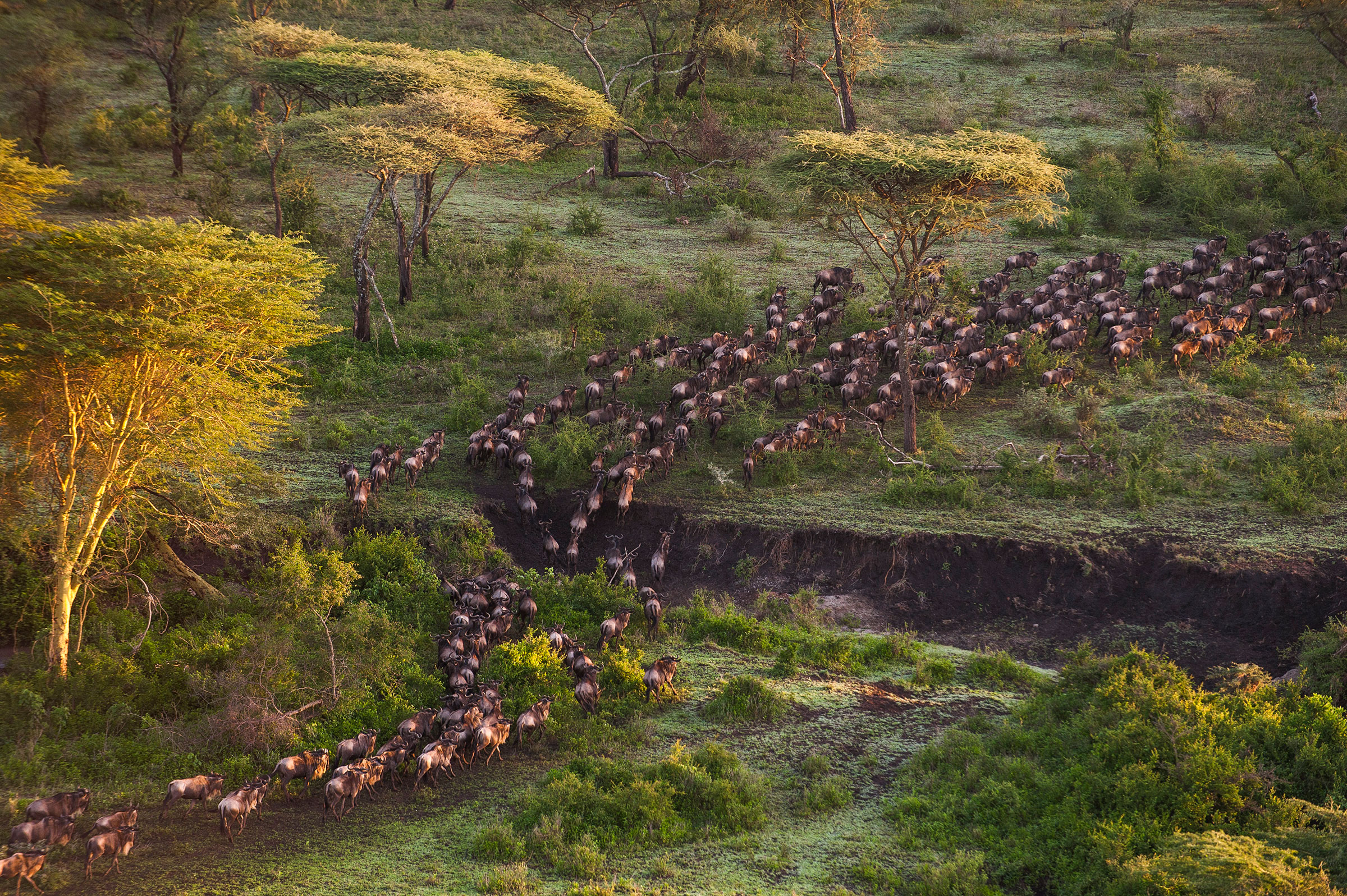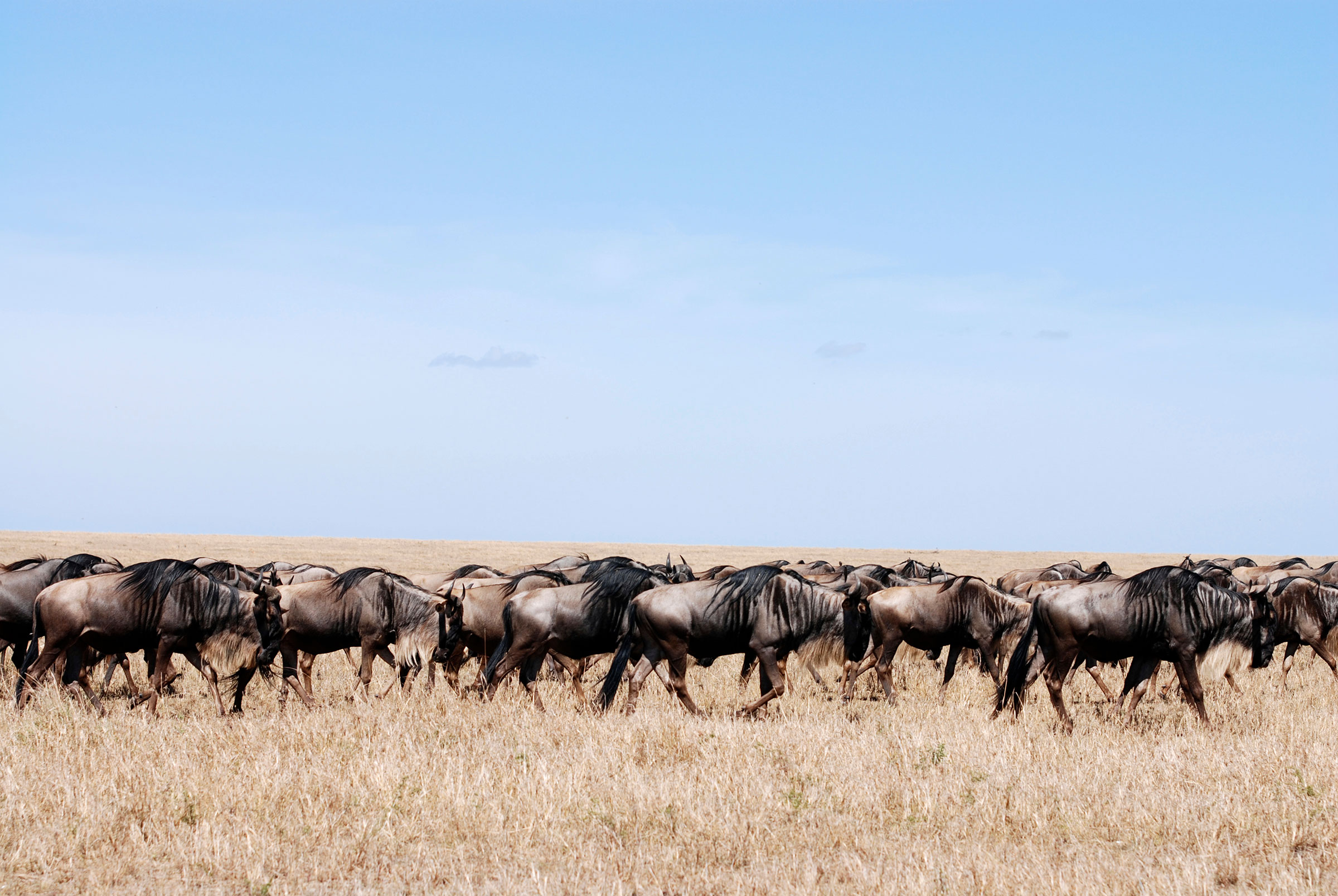A Migration Safari That’s Heavy on Animals
Not Tourists
A migration safari through Tanzania and Kenya is a bucket list item for many travelers. The Travel Designers at Ker & Downey can help you plan your migration safari so that you see herds of animals and not herds of tourists.
A Migration Safari
A migration safari is on the bucket list for many travelers. And rightly so! It’s one of the world’s most incredible natural events – a sight almost beyond words. It’s a time when over one million wildebeest, zebra, and antelope make their way between Tanzania and Kenya in a clockwise formation courting, mating, and giving birth. With the wildebeest come tremendous predator activity as lions and hyenas descend upon the herds and hunting is aplenty. It truly is a magnificent sight to behold.

The Herd Route
Beginning in November, the herds make their way into the southern plains of Tanzania in the Ndutu and Ngorongoro Crater area where there is fresh grazing following the rains.
At the start of the year in January, they’ll start giving birth to their babies. This is calving season – where approximately 8,000 baby wildebeest are born every single day during its peak. During calving season, the southern Serengeti plains sees the highest concentration of predators in Africa. They’re looking for an easy meal among the young calves. The wildebeest will stay in the southern plains through April. Then they’ll start to make their way into the western and central Serengeti.
The end of July and into August is the grand spectacle. By then the herds have reached the western Serengeti and the Grumeti Reserves and are preparing to cross the Mara River. There’s strength in numbers as the masses begin to make their way across the river and head into Kenya’s Masai Mara National Reserve.
By October, your best chance of seeing the herds is in the Masai Mara. And in November, the cycle starts again.

An Intimate Migration Safari
Because the Great Migration is such an incredible phenomenon, there are tons of people that head to Tanzania and Kenya each year to see it. But Ker & Downey prides itself on intimate and authentic safari experiences. We want your migration safari to be free of the masses of people.
For an intimate migration safari, we recommend the following camps:
- January to March: Olakira South, Ubuntu South, Namiri Plains, Dunia, Mwiba Lodge
- April to May: Dunia and Namiri Plains
- June to July: Ubuntu West, Ubuntu North, Olakira North, Sayari, Dunia, Namiri Plains, Mara Bush Houses, Rekero, Naboisho
- August to October: Ubuntu North, Olakira North, Sayari, Mara Bush Houses, Rekero, Naboisho
- November to December: Olakira and Ubuntu (all in North locations before these three camps move South), Sayari, Namiri Plains, Dunia, Mara Bush Houses, Rekero, Naboisho, Mwiba Lodge (beginning in December)

A Lesser-Known Migration Safari
There’s also a lesser known wildebeest migration that happens in Africa.
From August to December, herds of blue wildebeest, together with zebra and tsessebe, migrate from Angola into the Liuwa Plains in Zambia, creating what is Africa’s second largest wildebeest migration. Tens of thousands can be seen on the Liuwa Plains alongside resident buffalo, red lechwe, roan antelope, eland, and reedbuck. You’ll also find a host of grassland predators, including a fair number of cheetahs and an occasional leopard.
It’s important to time your migration safari on what you want to see. Our Luxury Travel Designers can assist with answering your questions and planning a migration safari you’ll remember forever.
Plan a Migration Safari with Ker & Downey
For more information about a migration safari in Tanzania and Kenya, contact a Luxury Travel Designer. For daily travel inspiration, follow us on Facebook, Instagram, and X.
